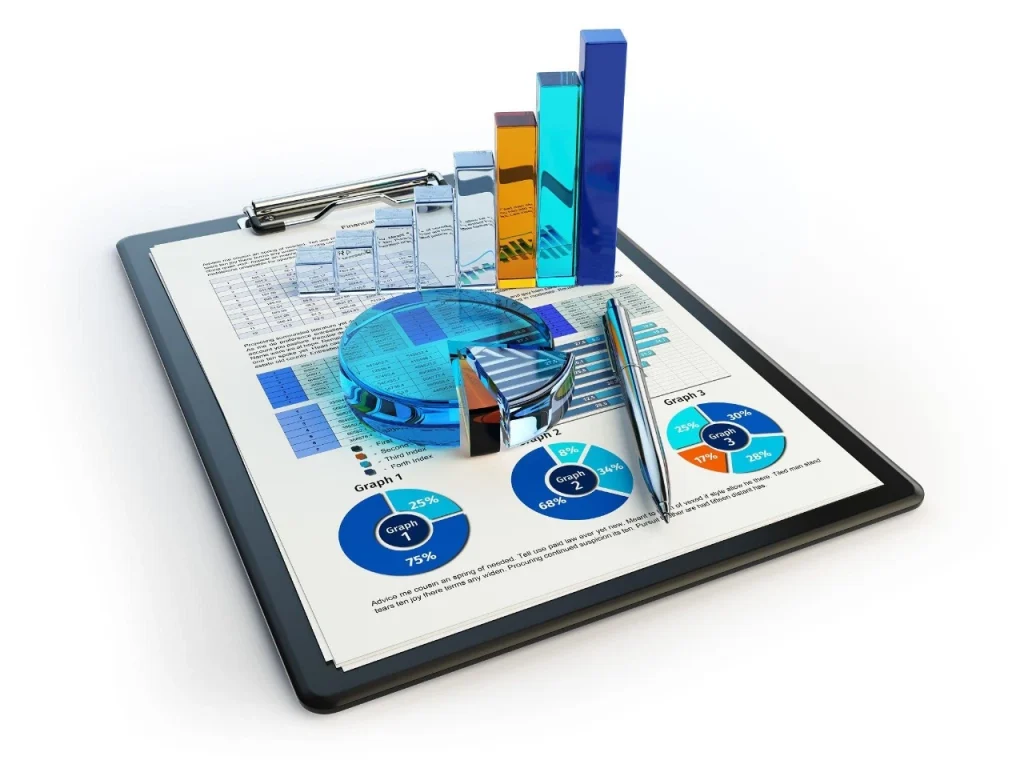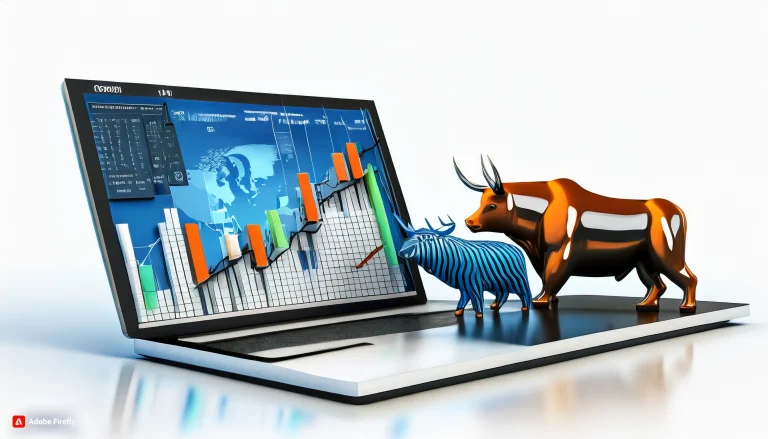Introduction
Technical indicators are crucial tools in a trader’s arsenal, providing insights into market trends, potential reversals, and entry/exit points. These indicators involve mathematical computations derived from historical data related to prices, trading volume, or open interest. While they don’t guarantee success, understanding and using them effectively can significantly enhance a trader’s decision-making process. In this blog post, we’ll delve into the top 10 technical indicators every trader should know to improve their trading strategies.
Moving Averages
Moving averages are fundamental technical indicators. They smooth out price data over a specific period, making it easier to identify trends. Two main types are commonly used: simple moving averages (SMA) and exponential moving averages (EMA). Traders often use crossovers between short-term (e.g., 50-day) and long-term (e.g., 200-day) moving averages to spot trend changes.
SMA and EMA are effective tools for identifying trend direction and potential reversal points. Traders can use them to confirm trends and determine support and resistance levels.
Relative Strength Index (RSI)
The Relative Strength Index, commonly referred to as RSI, serves as a momentum oscillator designed to gauge the velocity and magnitude of price fluctuations. It maintains a scale ranging from 0 to 100, where values surpassing 70 point towards overbought market conditions, while those falling below 30 hint at oversold circumstances.
Traders often use RSI to identify potential reversals. When the RSI crosses above 70, it may signal an overbought market, indicating a potential downturn. Conversely, when the RSI falls below 30, it may signal an oversold market, suggesting a potential uptrend.
Moving Average Convergence Divergence (MACD)
The Moving Average Convergence Divergence, or MACD, is a versatile indicator that combines two moving averages (a fast EMA and a slow EMA) and a histogram that represents the difference between these moving averages. MACD can help traders identify both trend direction and potential trend changes.
Traders look for MACD crossovers as signals for entering or exiting trades. A bullish crossover (when the MACD line crosses above the signal line) suggests a potential uptrend, while a bearish crossover (when the MACD line crosses below the signal line) indicates a potential downtrend.
Bollinger Bands
Bollinger Bands consist of a middle line (SMA) and two standard deviation lines above and below it. These bands expand and contract with market volatility. When the price approaches the upper band, it may indicate an overbought condition, while approaching the lower band suggests an oversold condition.
Traders utilize Bollinger Bands to spot possible reversals or breakout opportunities. When prices move outside the bands, it can signal a strong trend, and traders may consider entering or exiting positions accordingly.
Stochastic Oscillator
The Stochastic Oscillator is another momentum oscillator that compares the current closing price to the price range over a specified period. It fluctuates within a range from 0 to 100, serving as a tool for recognizing conditions of both overbuying and overselling.
Traders typically look for Stochastic crossovers and overbought/oversold levels. A bullish crossover in the oversold region (below 20) can be a signal to buy, while a bearish crossover in the overbought region (above 80) can be a signal to sell.
Fibonacci Retracement
Fibonacci retracement levels utilize the Fibonacci sequence as a foundation and are employed to pinpoint potential levels of support and resistance. Traders draw Fibonacci retracement lines from significant price peaks to troughs to determine possible price reversal points.
Fibonacci retracement levels, such as 38.2%, 50%, and 61.8%, are commonly used to identify potential price areas where trends may reverse or consolidate. Traders often look for confluence between Fibonacci levels and other technical indicators to make more informed decisions.
Ichimoku Cloud
The Ichimoku Cloud, or Ichimoku Kinko Hyo, is a comprehensive indicator that provides information about support and resistance levels, trend direction, and momentum. It consists of several components, including the Kijun-sen, Tenkan-sen, Senkou Span A, Senkou Span B, and the cloud itself.
Traders use the Ichimoku Cloud to identify potential trade setups and confirm trend direction. When the price is above the cloud, it suggests an uptrend, while a price below the cloud indicates a potential downtrend.
Average True Range (ATR)
The Average True Range, or ATR, measures market volatility by calculating the average range between the high and low prices over a specific period. A higher ATR value indicates higher volatility, while a lower value suggests lower volatility.
Traders use ATR to set stop-loss and take-profit levels based on the current market conditions. A wider ATR may require wider stop-loss levels, while a narrower ATR may allow for tighter stops.
Volume – Top 10 Technical Indicators
Volume is not a traditional technical indicator, but it plays a crucial role in technical analysis. Volume represents the number of shares or contracts traded during a specific time frame. A surge in trading volume frequently coincides with notable price fluctuations.
Traders use volume to confirm the validity of a trend. For example, if a price is rising, but the volume is decreasing, it may suggest a weak uptrend. Conversely, if a price is falling, but the volume is increasing, it may indicate a strong downtrend.
On-Balance Volume (OBV)
On-Balance Volume, or OBV, is a momentum indicator that uses volume to predict price movements. It adds or subtracts the daily volume based on whether the price closes higher or lower than the previous day.
OBV can help traders identify accumulation or distribution phases in the market. When OBV is rising, it suggests accumulation (buying pressure), potentially indicating an uptrend. Conversely, when OBV is falling, it indicates distribution (selling pressure), possibly signaling a downtrend.
Conclusion
Technical indicators are valuable tools for traders to analyze and interpret price data, helping them make more informed trading decisions. While these top 10 technical indicators are essential to know, it’s important to remember that no single indicator guarantees success in the highly dynamic world of trading. Traders often use a combination of these indicators, along with other forms of analysis, to develop effective trading strategies.
As you embark on your trading journey, take the time to understand each indicator thoroughly and practice using them in different market conditions. Moreover, always remember that risk management and discipline are just as critical as technical analysis. By integrating these technical indicators into your trading toolbox and adopting a disciplined approach, you can enhance your trading skills and increase your chances of success in the financial markets.




















